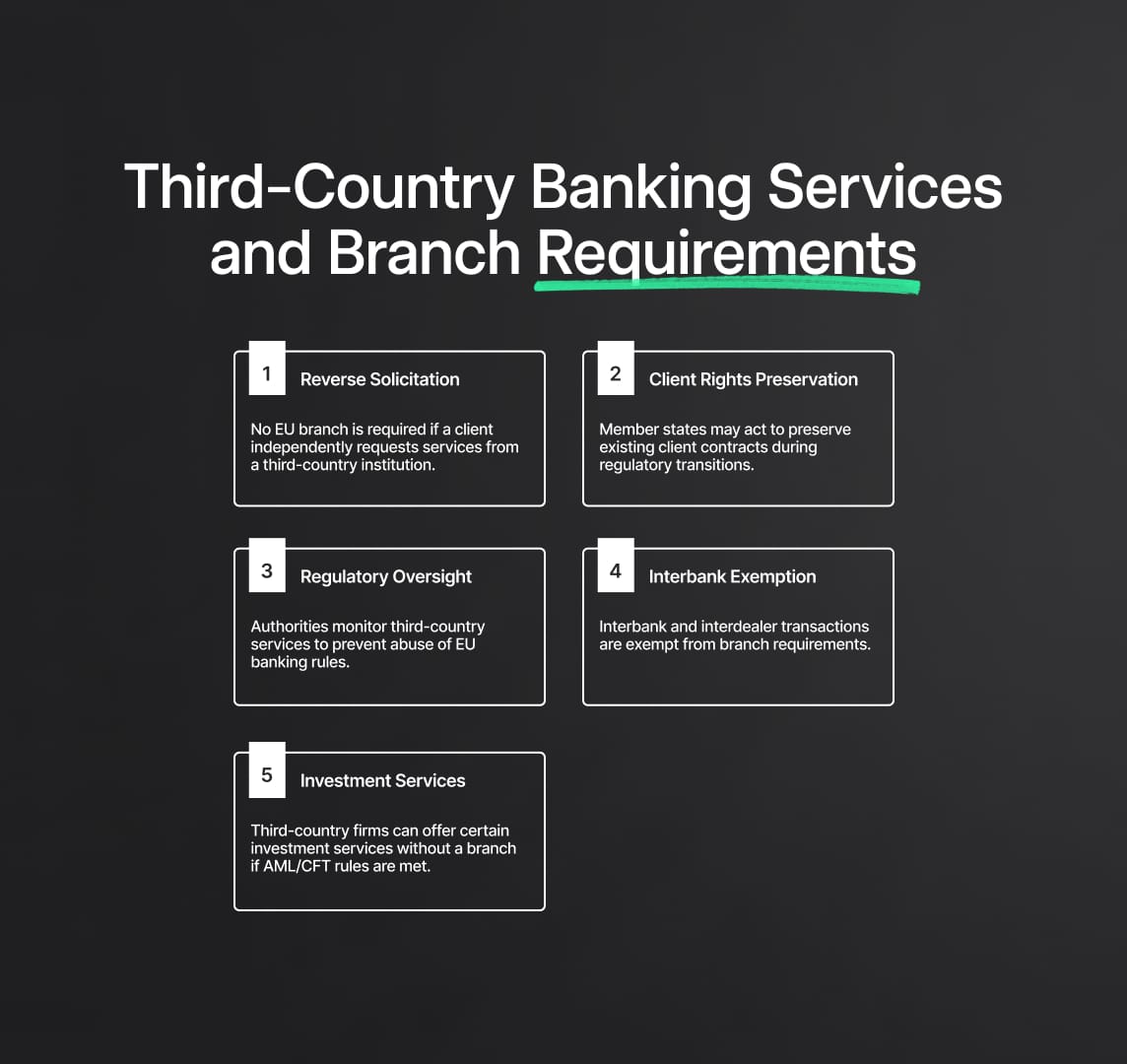EU Releases Draft Texts for CRR III and CRD VI
On May 22, 2024, the Council of the EU unveiled draft directives amending EU banking regulations, aiming to bolster supervisory powers, address environmental and social risks, and enhance risk assessment standards.

A major change in the European Union's regulatory environment took place on May 22, 2024. The Capital Requirements Regulation III (CRR III) and the Capital Requirements Directive VI (CRD VI) are two important legislative instruments whose draft texts were made public by the EU Council. With an emphasis on strengthening supervisory authority, enforcing sanctions, controlling third-country branches, and tackling environmental, social, and governance (ESG) issues, the CRD VI seeks to revise Directive 2013/36/EU.
In parallel, the CRR III aims to modify Regulation (EU) No 575/2013 by enacting additional regulations concerning market risk, operational risk, credit risk, credit valuation adjustment risk, and the production floor. The formal adoption of CRD VI and CRR III by the EU Council comes next, after these draft texts have been published. The completed texts will be formally incorporated into EU legislation upon adoption and publication in the EU Official Journal.
Source
[1]

Banking Supervision: Amendments to Directive 2013/36/EU
In order to harmonize the EU's financial supervisory system, Directive 2013/36/EU has been amended. The modifications center on supervisory powers, sanctions, third-country branches, and ESG risks. As suggested by the European Supervisory Authority (EBA), these modifications aim to simplify the internal banking market and lower compliance costs for small and non-complex institutions by 10% to 20%.
Important clauses require supervisory staff to submit an annual declaration of interests, prohibit conflicts of interest through tenure limitations and cooling-off periods, and guarantee the independence of supervisory authority from political and economic influence. Affected employees will be compensated for cooling-off periods, and the EBA will publish recommendations to assist in managing conflicts of interest.

Third-Country Banking Services and Branch Establishment Requirements
The most recent revisions to the EU banking directive deal with the use of banking services from outside the EU and the requirements that third-country banks have to set up shop in the EU. These adjustments are intended to prevent regulatory evasion, guarantee a seamless transition, and maintain the integrity of current contracts. In order to promote a fair approach to cross-border banking services, this directive specifies the precise conditions under which opening a branch in the EU is not necessary:
- Exemption from Reverse Solicitation: When a client independently requests financial services from a third-country institution, there is no need to open an EU branch. This covers the continuation of those services or those that are closely associated with the services that were first requested.
- Preserving the Acquired Rights of Clients: In order to safeguard clients' rights under current contracts while the new regulation is being implemented, member states may take action. These steps are solely intended to make compliance easier and avoid getting around them.
- Competent Authorities' Surveillance: The purpose of monitoring banking services provided by third countries is to stop EU regulations regarding cross-border banking from being abused.
- Transactions between banks and interdealers are exempt: Given the special nature of interbank and interdealer transactions, the branch establishment requirement does not apply to them.
- Financial Services and Related Activities: According to Directive 2014/65/EU, credit institutions based in third countries that offer investment services and other ancillary services inside the EU are free from the branch requirement. As long as businesses abide by laws against money laundering and counterterrorism financing, this includes operations like trading financial instruments and managing private wealth.
These clauses provide a sensible strategy for incorporating banking services from third countries into the EU while upholding strict regulatory requirements.

CRR III and CRD VI: Banking Authorisations and Supervision of Holding Companies
The amended directive gives competent authorities the authority to remove authorization from a credit institution that is judged to be failing or likely to fail if resolution action is not necessary for the public interest and no workable private sector solutions or supervisory actions can stop it from collapsing in a reasonable amount of time. In order to ensure a smooth market exit, such entities should be wound up in accordance with national insolvency rules. Withdrawing authorization should, however, be decided proportionately and taking into account national insolvency procedures; failure decisions should not be automatically linked to authorization withdrawals.
As parent businesses of banking groups, financial holding companies and mixed financial holding companies continue to be subject to the identification and approval process set forth by Directive (EU) 2019/878. Through the use of this system, capable authorities can oversee these organizations and guarantee compliance on a consolidated basis. As long as they are not involved in the management of the group, authorities may exempt some holding companies established for holding participations and, in certain circumstances, exclude them from the consolidation perimeter of the banking group. Use of this exclusionary power need to be restricted and exercised with caution.
Key Regulatory Changes in the EU's Calculation of Own Funds Requirements
Institutions can use either internal model techniques or standardized methodologies to determine their own funds requirements, according to EU Regulation (EU) No 575/2013. However, major changes have been made to address the possible underestimate of risks by internal models as a result of recent revelations from the Basel Committee on Banking Supervision (BCBS). By improving the comparability and legitimacy of capital ratios, these modifications hope to level the playing field for all institutions.
Main regulatory changes:
- Introduction of the Output Floor: A total production floor of 72.5% of the own funds requirements, as determined by accepted methods, has been established. By preventing organizations from drastically cutting their capital using internal models, this method seeks to improve risk assessment's reliability and consistency.
- Dual Own Funds Requirements Calculation: It is now necessary for institutions that employ internal models to compute two sets of total own funds requirements: one set using the models they use internally and another set using standardized methods. By doing this, double counting is prevented and internal model results are brought closer to industry-standard benchmarks.
- Utilization at Every Level of Consolidation: Application of the output floor is required at all consolidation levels. Members of specific groupings, including cooperative groups with central bodies, may be excused from this requirement if the parent institution satisfies the production floor on a consolidated basis.
- The Standardized Approach for Credit Risk (SA-CR) has been revised: The SA-CR provisions have been updated to improve risk sensitivity. Modifications include of adjusting risk weights for rated exposures to other institutions and fine-tuning the risk weight treatment for unrated exposures, without regard to implicit government support presumptions.
By making sure that capital adequacy measurements are more reliable and accurate in capturing risk, these regulatory adjustments hope to improve the stability and integrity of the financial system.
CRR III and CRD VI: Risk Weight Treatment for Debt and Equity Exposures
In order to appropriately capture the risks associated with debt and equity exposures and avoid regulatory arbitrage, recent regulatory amendments have refined risk weight treatments for these exposures. In order to maintain stability, current strategic equity holdings in corporations and certain insurance undertakings will be grandfathered in, but equity risk weights will progressively rise over a five-year period.
Additionally, investments held for a minimum of three years will not be regarded as speculative, encouraging long-term stock investments, particularly in unlisted Union enterprises. In order to overcome the majority of Union corporates' lack of external credit ratings, transitional procedures are implemented, enabling investment-grade exposures to be treated favorably for a predetermined amount of time. By ensuring that risk assessments reflect actual risks and encouraging continued investment in important industries, these changes aim to strengthen financial stability and transparency while facilitating a seamless transition for impacted institutions.
Corporate Exposure Risk Assessment Post-Transitional Period
After the transitional phase, a large percentage of an institution's business exposures will have its own funding requirements determined by credit evaluations made by designated External Credit Assessment Institutions (ECAIs). The usage of the transitional arrangement will be monitored by the European Supervisory Authorities (EBA, EIOPA, and ESMA), who will take into account any changes in the ECAI market and resolve any obstacles to credit evaluations, especially for corporates.
The transitional period intends to encourage larger companies to obtain external ratings by expanding the availability of ratings for Union corporates. Not only would expanding rating options beyond the current environment help the rating process, but it will also support the unity of the capital markets. Member states will evaluate ways to improve risk assessment procedures after the transition, such as central bank recognition as an ECAI, in coordination with their central banks.
Reduce your
compliance risks


